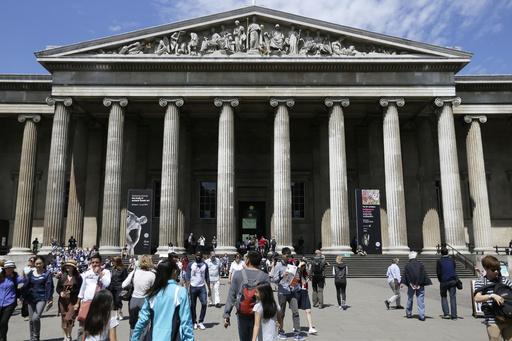LONDON (AP) — The British Museum went to court Tuesday against a former curator alleged to have stolen hundreds of artifacts from its collections and offered them for sale online.
The museum is suing Peter Higgs, who was fired in July 2023 after more than 1,800 items were discovered to be missing. Lawyers for the museum say Higgs “abused his position of trust” to steal ancient gems, gold jewelry and other pieces from storerooms over the course of a decade.
High Court judge Heather Williams ordered Higgs to list or return any items in his possession within four weeks. She also ordered the disclosure of his eBay and PayPal records.
The museum says it has recovered 356 of the missing items so far, and hopes to get more back.
“The items that have been stolen from the museum are of cultural and historical significance,” museum lawyer Daniel Burgess said in written legal arguments.
Burgess said the defendant tried to “cover his tracks” by using fake names, creating false documents, manipulating the museum’s records and selling artifacts at less than their value.
Higgs, who worked in the museum’s Greece and Rome department for more than two decades, denies the allegations and intends to dispute the museum’s legal claim.
He did not attend Tuesday’s hearing due to poor health, lawyers said.
A separate police investigation into the case is ongoing, and Higgs has not been charged with a crime.
Museum director Hartwig Fischer resigned after the loss of the items was revealed in August, apologizing for failing to take seriously enough a warning from an art historian that artifacts from its collection were being sold on eBay.
Chairman of trustees George Osborne has acknowledged that the reputation of the 265-year-old institution has been damaged by the episode.
The 18th-century museum in central London’s Bloomsbury district is one of Britain’s biggest tourist attractions, visited by 6 million people a year. They come to see a collection that ranges from Egyptian mummies and ancient Greek statues to Viking hoards, scrolls bearing 12th-century Chinese poetry and masks created by the Indigenous peoples of Canada.



